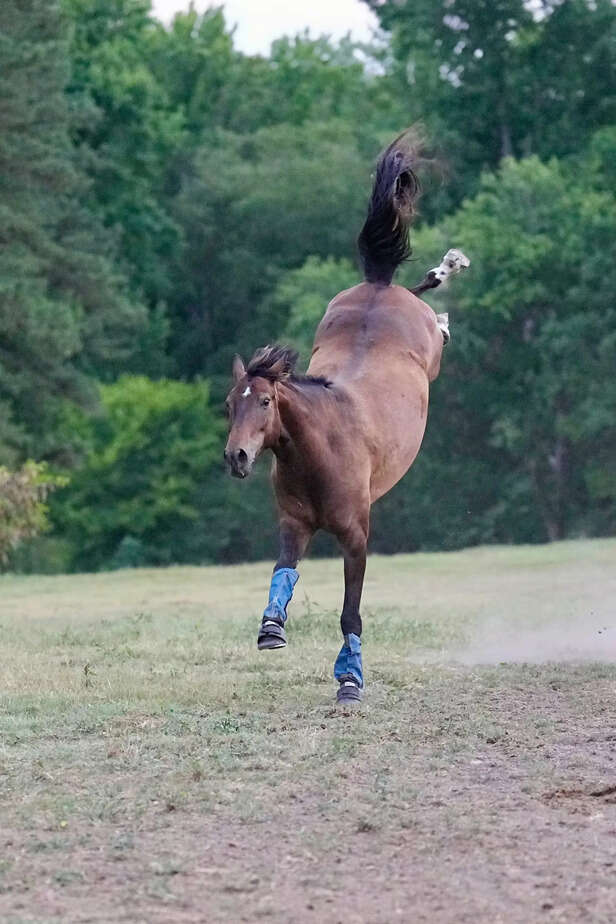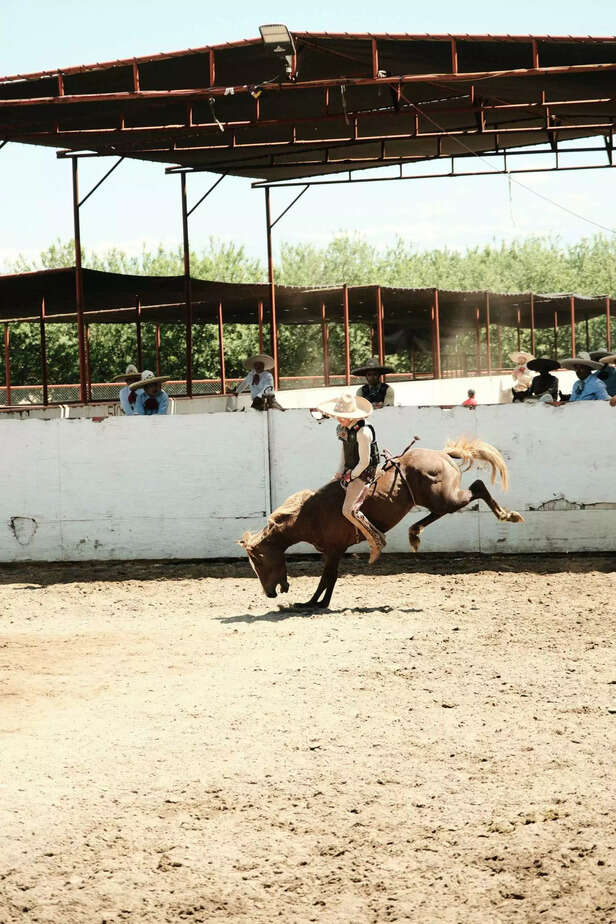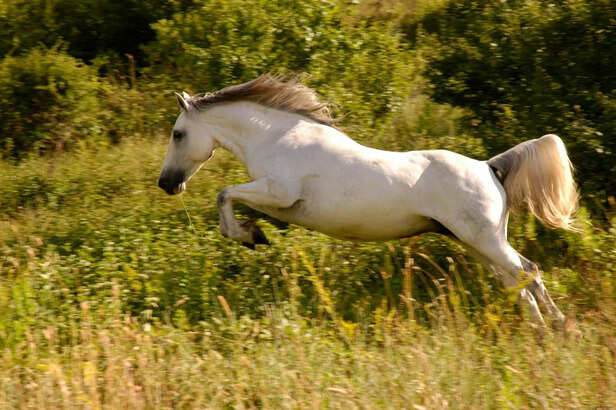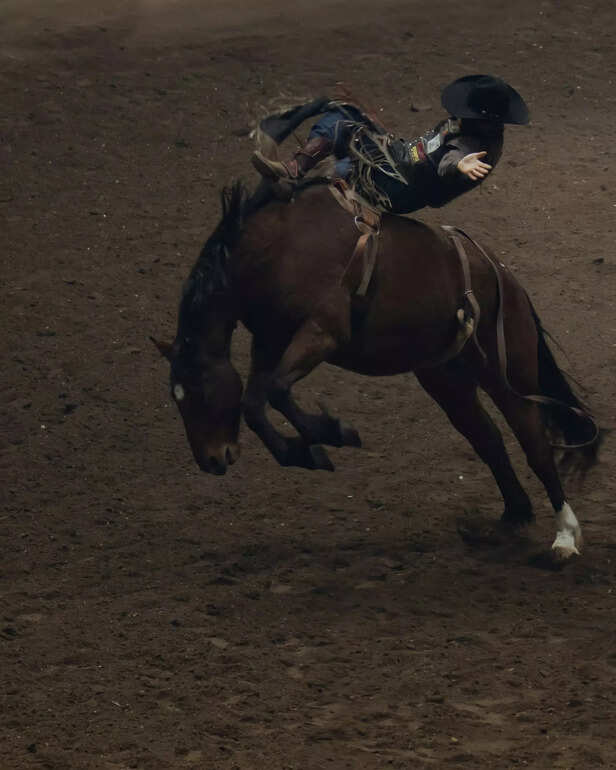The Unknown Truth Behind Why Horses Kick (And How to Fix It Fast)
Ankita Rai | Jun 09, 2025, 16:51 IST
Horse
( Image credit : Pexels )
Horses kick not out of spite but as a form of communication, defense, or discomfort. From warning swipes to powerful double-barrel strikes, these actions often signal fear, pain, or confusion. This article explores why horses kick, the types of kicks, and how to manage or prevent them through proper handling, body language awareness, health checks, and trust-building training. Understanding a horse’s perspective can turn a dangerous behavior into a conversation one that prioritizes safety, empathy, and long-term companionship between human and horse.
A horse’s kick is one of the most powerful and dangerous gestures in its behavioral toolkit—but it’s also one of the most natural. A kick is not simply a sign of aggression; it can be a means of communication, a survival instinct, and, at times, a silent plea for help. Whether you’re an experienced handler or new to horses, understanding why horses kick and how to manage this behavior is essential for safety and building mutual trust.
The Language Behind the Kick

Horses are prey animals, hardwired for survival. For millennia, their defense strategy has been simple: flee first, fight if necessary. When escape isn’t possible, a kick becomes an instinctive last line of defense. Unlike dogs or cats, horses don’t rely on vocal cues. They express themselves through body language—position of the ears, swishing tail, tension in their posture, and the movements of their legs.
A kick may be the result of:
Types of Kicks and Their Meaning

Understanding the nature of a horse’s kick can help identify its cause. Not every kick is the same.

Horses rarely kick people out of intentional malice. More often, it is an instinctive reaction to their environment, and people can easily be caught in the crossfire. Common causes include:

Preventing and managing kicking requires awareness, consistency, and training. Here are effective strategies to reduce risk and respond appropriately:
1. Read the Signs Early
Horses often signal their discomfort before they kick. Flattened ears, a swishing tail, shifting weight to one leg, or tension in their body are all warnings. Recognizing and respecting these signs helps prevent escalation.
2. Approach With Care
Always approach a horse from the side or front, making sure they can see and hear you. Speak calmly and move with intention. If you need to move behind a horse, either stay very close with a hand on their body or stay well out of range to avoid injury.
3. Build Boundaries Through Groundwork
Training exercises like leading, yielding the hindquarters, and backing up establish respect and communication. Groundwork helps the horse feel safer and more confident around people.
4. Desensitize Through Gentle Handling
Regular, calm touch—starting with less sensitive areas and progressing toward more reactive spots—can help a horse become more comfortable. Positive reinforcement, such as treats or kind words, reinforces good behavior.
5. Investigate Physical Issues
A sudden increase in kicking could be linked to a health issue. Consult a veterinarian to rule out or treat:
6. Avoid Reinforcing Kicking Behavior
If you retreat immediately after a horse kicks, they may learn that kicking gets them what they want. Instead, calmly remove yourself from danger, then re-approach once the horse has calmed, reinforcing that cooperation—not aggression—gets results.
7. Seek Professional Help if Needed
Chronic or aggressive kickers may need intervention from an experienced trainer or equine behaviorist. Attempting to manage serious behavioral problems without expertise can be dangerous.
When to Be Concerned

While an occasional kick under stress may not be alarming, frequent or unpredictable kicking signals deeper issues. This could stem from trauma, past abuse, improper training, or even neurological problems. If the behavior persists, consult a professional rather than trying to handle it alone.
Trust Is the Best Prevention

At the heart of every safe horse-human relationship is trust. Horses that feel secure, respected, and understood are far less likely to react with fear or aggression. Training should never be about dominance—it should be about communication, mutual respect, and safety.
Patience, consistency, and empathy go a long way. A horse doesn’t kick because it wants to hurt you—it kicks because it feels it has no other way to express itself. By listening, observing, and responding thoughtfully, you create a partnership built on understanding, not fear.
Discover expert advice and the latest tips on pet care, training, health, and more. Stay updated with all things pets at Times Pets!
Frequently Asked Questions (FAQs)
The Language Behind the Kick

Horse
( Image credit : Pexels )
Horses are prey animals, hardwired for survival. For millennia, their defense strategy has been simple: flee first, fight if necessary. When escape isn’t possible, a kick becomes an instinctive last line of defense. Unlike dogs or cats, horses don’t rely on vocal cues. They express themselves through body language—position of the ears, swishing tail, tension in their posture, and the movements of their legs.
A kick may be the result of:
- Asserting dominance over herd mates or territory
- Expressing fear, discomfort, or irritation
- Protecting their personal space
- Reacting to sudden movements or threats
Types of Kicks and Their Meaning

Horses kick in various ways
( Image credit : Pexels )
Understanding the nature of a horse’s kick can help identify its cause. Not every kick is the same.
- Single hind leg kick
A warning directed at something behind them, such as a person approaching unnoticed or another horse invading their space. - Double-barrel kick
Both hind legs are launched backward simultaneously. This is a serious defensive response, often triggered by fear, panic, or a perceived threat. - Cow-kick
The hind leg swings forward and sideways, usually in reaction to being touched on sensitive areas like the belly or flank. - Striking with a front leg
Less common, but may indicate impatience, irritation, or a refusal to cooperate. - Playful buck with a kick
Common in young horses, especially when they are excited or socializing in open fields. While playful in nature, this movement can still pose a danger to nearby humans.

White horse
( Image credit : Pexels )
Horses rarely kick people out of intentional malice. More often, it is an instinctive reaction to their environment, and people can easily be caught in the crossfire. Common causes include:
- Startling
Approaching a horse too quietly or from behind can startle them, triggering a reflexive kick. - Pain or discomfort
Ill-fitting tack, hoof injuries, digestive distress, or skin sensitivity may cause a horse to lash out during grooming, saddling, or riding. - Lack of desensitization
Horses not used to being touched on certain parts of their body may react defensively when handled. - Poor handling or training
Horses subjected to inconsistent or forceful handling may develop anxiety, leading to defensive behaviors. - Hormonal or herd-related behavior
Stallions and mares in heat can be more reactive and unpredictable in the presence of other horses.

you can prevent it
( Image credit : Pexels )
Preventing and managing kicking requires awareness, consistency, and training. Here are effective strategies to reduce risk and respond appropriately:
1. Read the Signs Early
Horses often signal their discomfort before they kick. Flattened ears, a swishing tail, shifting weight to one leg, or tension in their body are all warnings. Recognizing and respecting these signs helps prevent escalation.
2. Approach With Care
Always approach a horse from the side or front, making sure they can see and hear you. Speak calmly and move with intention. If you need to move behind a horse, either stay very close with a hand on their body or stay well out of range to avoid injury.
3. Build Boundaries Through Groundwork
Training exercises like leading, yielding the hindquarters, and backing up establish respect and communication. Groundwork helps the horse feel safer and more confident around people.
4. Desensitize Through Gentle Handling
Regular, calm touch—starting with less sensitive areas and progressing toward more reactive spots—can help a horse become more comfortable. Positive reinforcement, such as treats or kind words, reinforces good behavior.
5. Investigate Physical Issues
A sudden increase in kicking could be linked to a health issue. Consult a veterinarian to rule out or treat:
- Poorly fitting saddles or tack
- Hoof problems or injuries
- Digestive discomfort
- Hormonal imbalances
- Dental pain or sharp teeth
6. Avoid Reinforcing Kicking Behavior
If you retreat immediately after a horse kicks, they may learn that kicking gets them what they want. Instead, calmly remove yourself from danger, then re-approach once the horse has calmed, reinforcing that cooperation—not aggression—gets results.
7. Seek Professional Help if Needed
Chronic or aggressive kickers may need intervention from an experienced trainer or equine behaviorist. Attempting to manage serious behavioral problems without expertise can be dangerous.
When to Be Concerned

Horse
( Image credit : Pexels )
While an occasional kick under stress may not be alarming, frequent or unpredictable kicking signals deeper issues. This could stem from trauma, past abuse, improper training, or even neurological problems. If the behavior persists, consult a professional rather than trying to handle it alone.
Trust Is the Best Prevention

Horse
( Image credit : Pexels )
At the heart of every safe horse-human relationship is trust. Horses that feel secure, respected, and understood are far less likely to react with fear or aggression. Training should never be about dominance—it should be about communication, mutual respect, and safety.
Patience, consistency, and empathy go a long way. A horse doesn’t kick because it wants to hurt you—it kicks because it feels it has no other way to express itself. By listening, observing, and responding thoughtfully, you create a partnership built on understanding, not fear.
Discover expert advice and the latest tips on pet care, training, health, and more. Stay updated with all things pets at Times Pets!
Frequently Asked Questions (FAQs)
- Why do horses kick humans?
Horses may kick humans out of fear, surprise, pain, or poor training. - How do I stop my horse from kicking?
Consistent training, gentle desensitization, and addressing health issues help prevent kicking. - What are the signs a horse might kick?
Watch for pinned ears, tail swishing, weight shifting, or sudden tension in their body.
